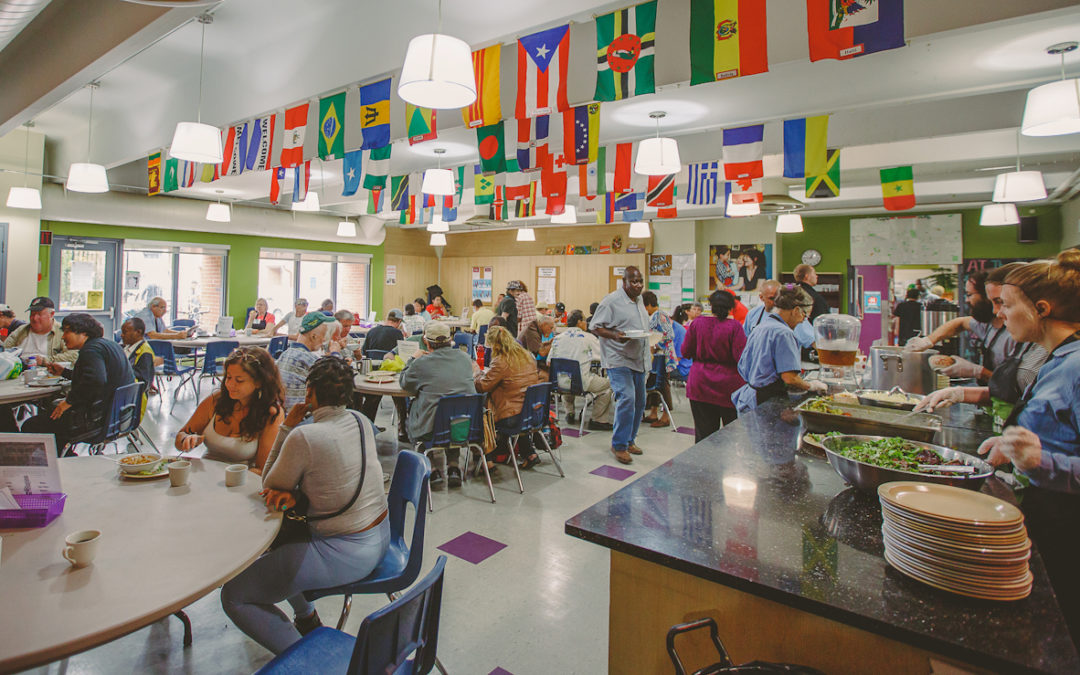Community Food Centers are an exciting development in food system infrastructure and make up an increasing share of our work at New Venture Advisors. In this screencast I’ll share some of the elements we’re seeing come together in Community Food Centers across the nation.
This screencast is the companion video to our Good Food Glossary post on Community Food Centers. If you haven’t already, listen to that screencast first. You can find it on our blog or by clicking this link.
Food Hub
Very often it starts with the development of a food hub or a local food warehouse. These businesses are the foundation of food system infrastructure, providing the means to aggregate food from local farms and supply local businesses. Much of our early work at New Venture Advisors focused on analyzing opportunities for food hubs that fit this description.
Value Added Processing
The next stage of food system development is regionally-scaled processing capacity. This often stems from a desire to provide farmers with a way to increase their revenue by adding value to raw products – such as cutting, preserving or packaging their harvest. So our work evolved into examining small batch processing facilities and certified kitchens that met this need.
Shared Kitchen
Well, once you’ve built that capacity the question is what to do with it when the farmers aren’t using it. Our clients saw the opportunity to rent space to food entrepreneurs, thus turning processing facilities into shared kitchens.
Food Business Incubator
With a shared kitchen in place, the next piece is adding a food business incubator, which provides wraparound business services that enable food entrepreneurs to be more successful, whether they’re farmers or artisanal food makers or both.
Co-Packers, Commissaries, Central Kitchens, Canneries
If they’re very successful, their next question is how to expand production when demand outstrips their ability to meet it using a shared kitchen. This next cluster of businesses – co-packers, commissaries, central kitchens and canneries – each has a slightly different meaning depending on who you ask, but by most definitions they have a dedicated crew that manufactures products for others. We’re seeing exciting potential in these models, especially for hunger relief organizations.
Market
Another expansion, once you’ve got raw product coming through a food hub and packaged product being manufactured onsite, is a retail market. We’ve seen them as simple as a kiosk featuring shared kitchen products, to grocery concepts that serve a larger customer base with a more complete assortment of fresh and packaged foods.
Cafe
Similarly, a café can take advantage of the products coming in from the food hub, and the excess and waste from the hub and the market, and even become a popup restaurant giving foodservice and catering entrepreneurs from the shared kitchen a chance to test their concept. The café can incorporate a workforce development program, providing foodservice jobs and training as part of the food center’s programming.
Demonstration Kitchen & Classrooms
Next might be a demonstration kitchen with classrooms that could support a more robust culinary program and provide a venue for cooking classes and nutrition education. Plus, a demo kitchen can be an important feature for food businesses that need a place to meet with customers and sample their products.
Event Space
But sometimes what really makes these food centers work is event space. We often hear from communities, especially in rural areas, that there isn’t a place nearby to rent out for weddings, parties and meetings, and having a space adjacent to amenities like a catering kitchen could be a real asset in the community. In fact, this can be the main revenue stream for a food center, sometimes making the difference between breakeven and loss.
Food Trucks
An inviting feature of event space is an indoor/outdoor option, opening up the possibility of bringing food trucks onsite, creating a vibrant atmosphere for events and a popular way to cater them.
And those food trucks also need many of the services that are offered by a food center – a place to park and plug in overnight, dispose of waste and greywater, a kitchen where they can prep before going out, etc. And food truck operators usually need kitchen access when other types of businesses don’t, making them an attractive category of renters to boost kitchen utilization.
So, taken together the purple box is centered in aggregation and distribution, the blue boxes are centered in the kitchen and production, the green boxes are expansions of these activities, and the orange boxes are programmatic overlays.
Now, I want to show you what can happen when you use these spaces for a deeper level of programming that truly make them community food centers.
Programming Expansions
A café can easily be programmed into an area where hot meal service can be provided as part of a hunger relief program. Space for a market can be expanded to include a client-choice food pantry. A food hub and a food bank can operate out of the same warehouse. And a shared kitchen can become a community kitchen where stations are available to certain members of the community at no cost.
So these are all of the ways we are seeing Community Food Centers being explored in towns and cities across the country.
We’d love to talk with you about your vision for a community food center. Please reach out if we can help. Thanks!
Photo courtesy of The Stop Community Food Centre in Toronto, Ontario. To learn more visit http://www.thestop.org/.




This TOTALLY ties into the work we’re doing here in Central Brooklyn and the vision we have to expand and franchise our model. I would definitely be interested in talking more.
Karen – I’d love to talk to you about your vision. I’ll reach out to you to discuss further. Thanks, Deb